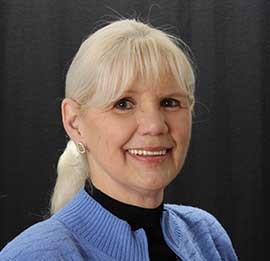- (000) 123 458 789
- office@worldpatientsalliance.org

PATIENT VOICES
Chronic Conditions and Empowerment
Reclaiming Life: A Half-Century with Chronic Pain
 Penney Cowan
Penney Cowan
Fibromyalgia
USA
For over 50 years, I’ve lived with chronic pain—pain that was, at times, debilitating and overwhelming, gradually seeping into every corner of my life. I searched for years for answers, for relief, for hope. The turning point came in 1979, when I was referred to the Pain Management Program at the Cleveland Clinic. There, I was diagnosed with fibromyalgia, a chronic condition that causes widespread musculoskeletal pain, fatigue, and tenderness.
At one point, pain had become my identity.
But at the Cleveland Clinic, I discovered two life-changing truths: I was not alone—and I had more power than I realized.
I met others who looked fine on the outside, but inside were battling pain, isolation, and uncertainty—just like I was. More importantly, I learned that pain could be managed. But it wouldn’t come through medication alone. It required active participation, personal responsibility, and a commitment to change.
Through the program, I learned to:
Understand the emotional impact of pain
Begin a gentle, consistent exercise regimen
Recondition my body and mind
Prioritize my energy and set realistic goals
It was a journey of transformation—from seeing myself as a patient to reclaiming the role of a functioning, independent person. These tools became part of my daily life, so much so that I no longer wake up thinking about how I’ll get through the day—it simply happens. But it didn’t come overnight. It took time, effort, and the support of others who truly understood.
The Birth of a Movement
When I returned home, I knew I had to keep the momentum going. I wanted to hold on to what I had learned—and I wanted to help others do the same.
I placed a simple notice in my church bulletin asking if anyone else was living with chronic pain—whether from musculoskeletal issues or neuropathic conditions like burning, pins and needles, or electric-shock sensations. My goal was modest: help just one person feel less alone and understand that a better quality of life is possible.
That year, two people joined me. We met regularly, shared our struggles, and supported one another. That small group became the first chapter of what would grow into the American Chronic Pain Association (ACPA).
Within a year, our single group had grown to seven across the country. Realizing I couldn’t guide each one personally, I created the ACPA First Steps Manual—a practical, peer-based guide to the same skills and coping strategies that helped me reclaim my life.
Why Support Groups Matter
Support groups are powerful tools in pain management. They offer more than just emotional support, they create a space where people can share openly, learn together, and build a toolkit for daily living. Our philosophy is simple: pain is real, but so is your potential.
We encourage members to:
Educate themselves about their condition
Work in partnership with their healthcare providers
Apply proven coping strategies consistently
Regain confidence and self-worth
These aren’t just meetings. They’re lifelines.
From Three People to a Global Network
Today, the ACPA has grown far beyond what I ever imagined. There are now more than 700 ACPA support groups worldwide—across nearly every U.S. state, and in countries including the UK, Mexico, Australia, and even Russia.
Across the globe, these groups are helping people reconnect with their lives, rebuild their identities, and rediscover joy—despite the pain.
Our Mission Continues
What began with three people in a room has become a global movement. The ACPA empowers people with chronic pain to live full, meaningful lives. We provide resources, tools, and support—not just to patients, but to caregivers, healthcare providers, and communities.
To anyone who feels alone in their pain: you are not. We are here. And there is a path forward.

